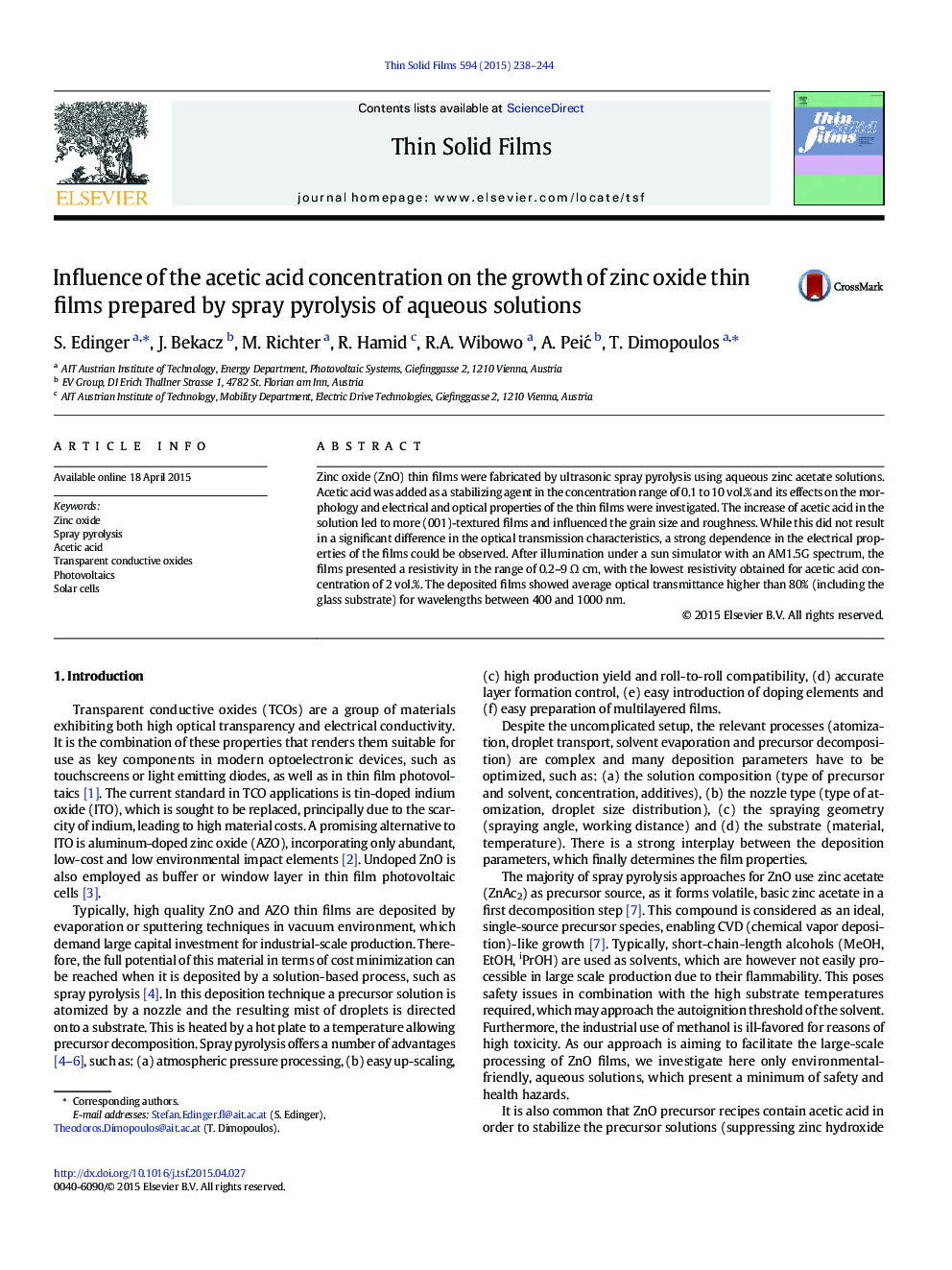| Article ID | Journal | Published Year | Pages | File Type |
|---|---|---|---|---|
| 1664355 | Thin Solid Films | 2015 | 7 Pages |
•Conductive and transparent zinc oxide films were grown by aqueous spray pyrolysis.•The acetic acid in the solution affects morphology and optoelectrical properties.•Acetic acid increases the (001)-texture and influences grain size and roughness.•A minimum of film resistivity is obtained for 2 vol.% acetic acid concentration.
Zinc oxide (ZnO) thin films were fabricated by ultrasonic spray pyrolysis using aqueous zinc acetate solutions. Acetic acid was added as a stabilizing agent in the concentration range of 0.1 to 10 vol.% and its effects on the morphology and electrical and optical properties of the thin films were investigated. The increase of acetic acid in the solution led to more (001)-textured films and influenced the grain size and roughness. While this did not result in a significant difference in the optical transmission characteristics, a strong dependence in the electrical properties of the films could be observed. After illumination under a sun simulator with an AM1.5G spectrum, the films presented a resistivity in the range of 0.2–9 Ω cm, with the lowest resistivity obtained for acetic acid concentration of 2 vol.%. The deposited films showed average optical transmittance higher than 80% (including the glass substrate) for wavelengths between 400 and 1000 nm.
